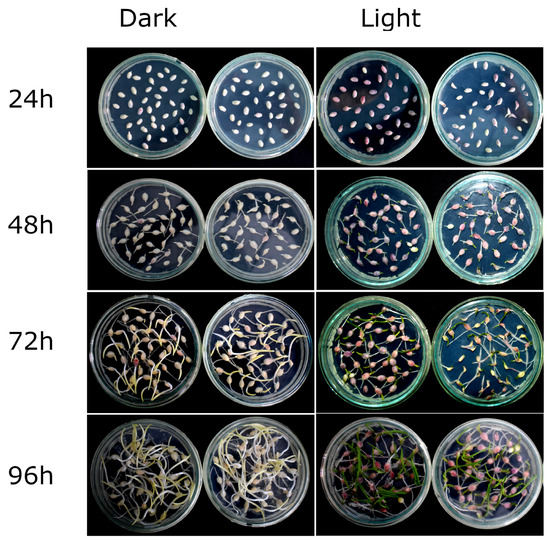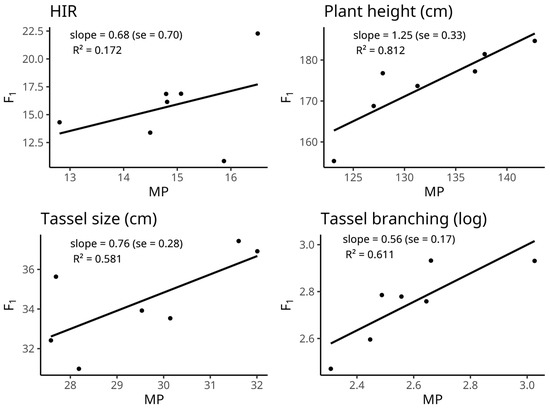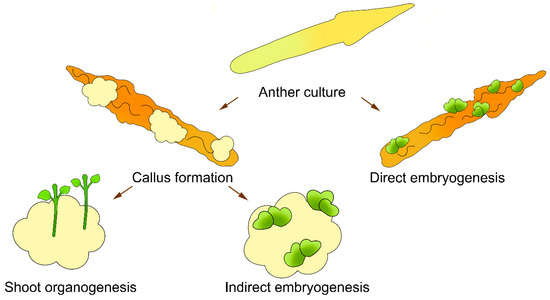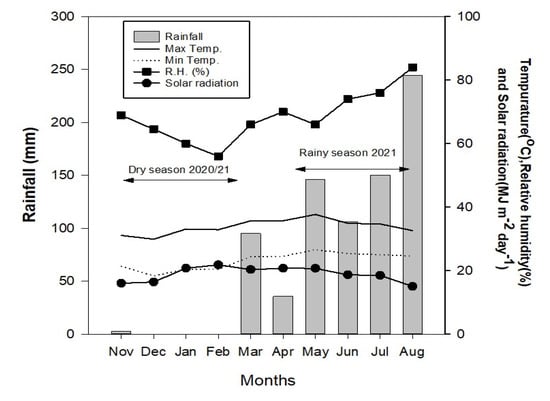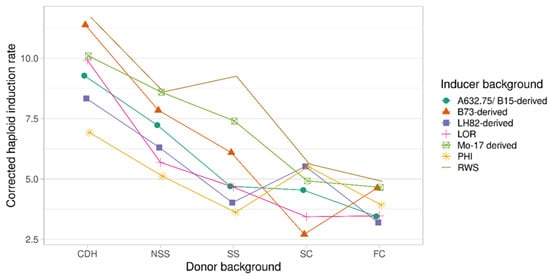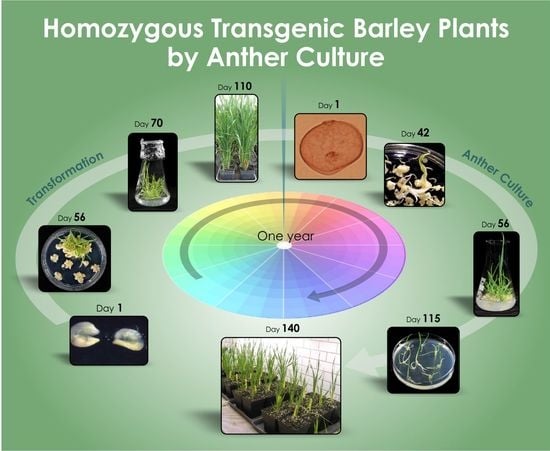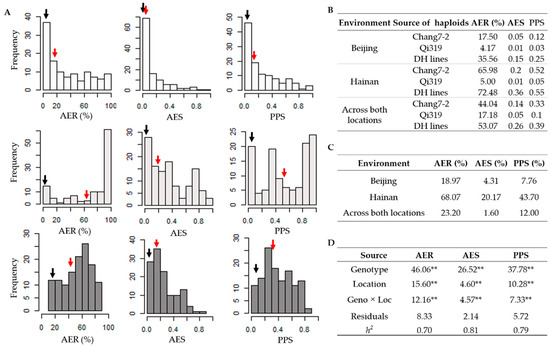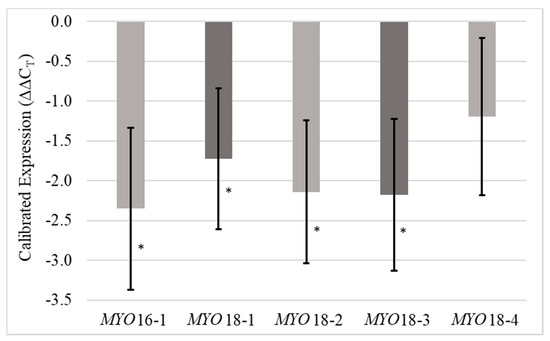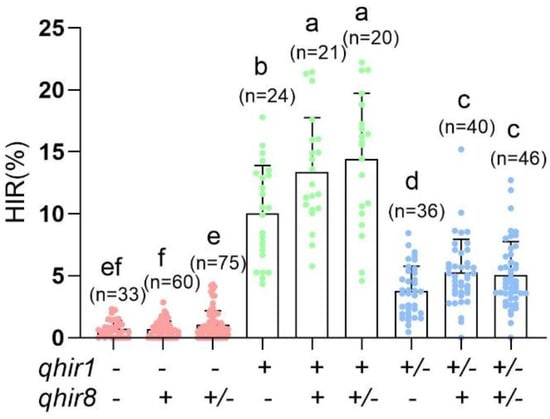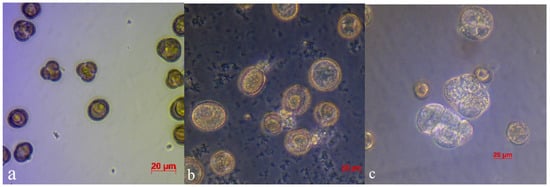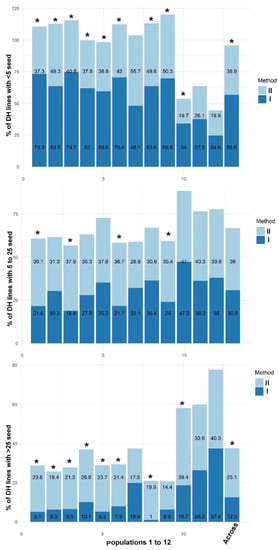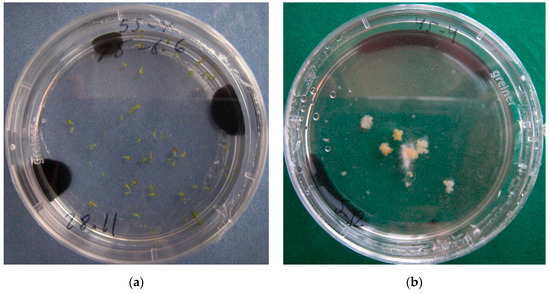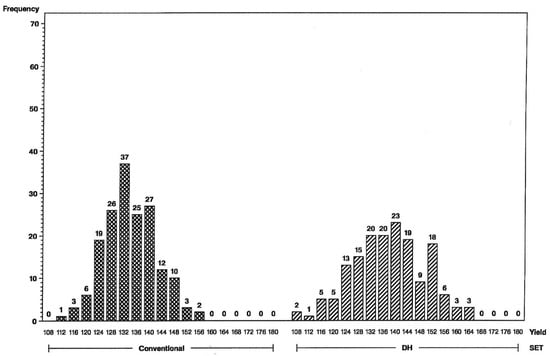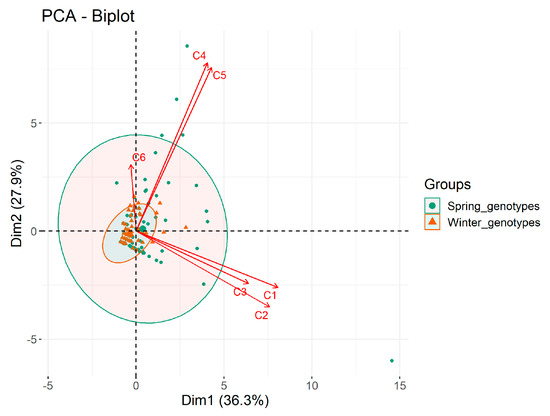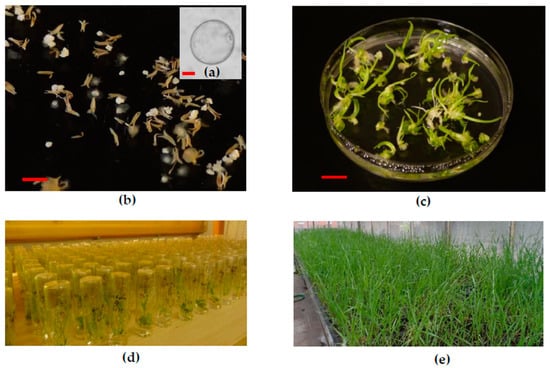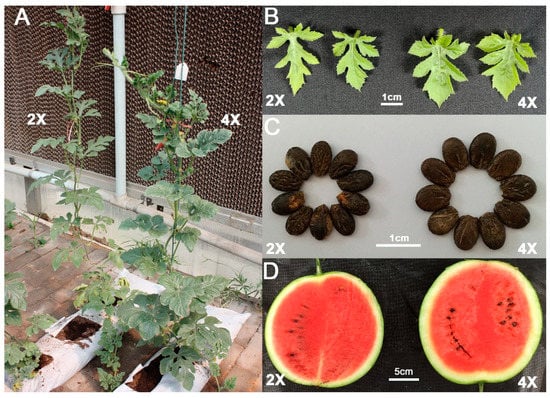Doubled Haploid Technology in Plant Breeding
Share This Topical Collection
Editor
 Prof. Thomas Lübberstedt
Prof. Thomas Lübberstedt
 Prof. Thomas Lübberstedt
Prof. Thomas Lübberstedt
E-Mail
Website
Collection Editor
Department of Agronomy, Iowa State University, Ames, IA 50011, USA
Interests: molecular plant breeding; maize genetics and genomics; doubled haploid technology and utilization
Topical Collection Information
Dear Colleagues,
The ability to generate homozygous and homogeneous lines is an important time constraint in plant breeding. By using doubled haploids (DHs), homozygous and homogeneous lines can be produced in two rather than five or more generations. Other advantages include reduced costs to produce cultivars, more precise evaluation of phenotypic traits, effective elimination of undesirable genes, and trait fixation in haploids using marker-assisted selection, leading to effective use of molecular markers and more efficient combination of traits. Because the success of breeding programs depends on the genetic gain per unit time, the use of DH technology has become routine in the breeding of the major self-pollinated cereal species wheat and barley, as well as in maize and canola.
Three approaches are generally used to develop DH lines: (1) microspore and anther culture, (2) wide hybridization between different species (such as the use of maize as a haploid inducer in wheat) to induce chromosome elimination, and (3) the use of particular inducer genotypes within species that facilitate the production of kernels with haploid embryos. This latter approach has resulted in the isolation of genes controlling haploid induction. The first respective gene, indeterminate gametophyte 1 (ig1), was discovered in maize and enables the generation of paternal haploids. A histone encoding gene, CenH3, is responsible for haploid induction in Arabidopsis thaliana, and a CenH3 homologue gives Hordeum bulbosum the ability to induce haploids in barley (Hordeum vulgare). More recently, quantitative trait loci (QTL) have been genetically and physically mapped and used to control the induction of maternal haploids in maize. Further, the gene matrilineal (MTL) underlying this QTL has been isolated by three independent research groups. It can be expected that an increasing number of genes associated with haploid induction control will be available in the near future. It has been demonstrated that these genes or their homologues can be used to establish haploid induction in novel species.
In this collection articles (original research papers, perspectives, hypotheses, opinions, reviews, modeling approaches and methods) are most welcome that focus on molecular processes related to haploid induction, genome doubling, biological processes involved in doubled haploid plant development in tissue culture (using approaches such as transcriptomics, proteomics, metabolomics, and genetic mapping), the development of methods to increase the efficiency of the DH process (such as novel phenomic methods for haploid – diploid discrimination), introduction of DH technology in novel species, and the utilization of DH technology for novel applications (such as for gene editing), in model plants, crop plants, trees, aquatic plants and native species.
Prof. Thomas Lübberstedt
Collection Editor
Manuscript Submission Information
Manuscripts should be submitted online at www.mdpi.com by registering and logging in to this website. Once you are registered, click here to go to the submission form. Manuscripts can be submitted until the deadline. All submissions that pass pre-check are peer-reviewed. Accepted papers will be published continuously in the journal (as soon as accepted) and will be listed together on the collection website. Research articles, review articles as well as short communications are invited. For planned papers, a title and short abstract (about 100 words) can be sent to the Editorial Office for announcement on this website.
Submitted manuscripts should not have been published previously, nor be under consideration for publication elsewhere (except conference proceedings papers). All manuscripts are thoroughly refereed through a single-blind peer-review process. A guide for authors and other relevant information for submission of manuscripts is available on the Instructions for Authors page. Plants is an international peer-reviewed open access semimonthly journal published by MDPI.
Please visit the Instructions for Authors page before submitting a manuscript.
The Article Processing Charge (APC) for publication in this open access journal is 2700 CHF (Swiss Francs).
Submitted papers should be well formatted and use good English. Authors may use MDPI's
English editing service prior to publication or during author revisions.
Keywords
- haploid induction
- genome doubling
- anther culture
- microspore culture
- inducer development
- maternal haploid induction
- paternal haploid induction
- haploid-diploid discrimination
- utilization of doubled haploids
Published Papers (22 papers)
Open AccessArticle
Effectiveness of R1-nj Anthocyanin Marker in the Identification of In Vivo Induced Maize Haploid Embryos
by
Luis Antonio Lopez, John Ochieng, Mario Pacheco, Leocadio Martinez, Hamilton Amoshe Omar, Manje Gowda, Boddupalli M. Prasanna, Kanwarpal S. Dhugga and Vijay Chaikam
Cited by 1 | Viewed by 1686
Abstract
Doubled haploid (DH) technology has become integral to maize breeding programs to expedite inbred line development and increase the efficiency of breeding operations. Unlike many other plant species that use in vitro methods, DH production in maize uses a relatively simple and efficient
[...] Read more.
Doubled haploid (DH) technology has become integral to maize breeding programs to expedite inbred line development and increase the efficiency of breeding operations. Unlike many other plant species that use in vitro methods, DH production in maize uses a relatively simple and efficient in vivo haploid induction method. However, it takes two complete crop cycles for DH line generation, one for haploid induction and the other one for chromosome doubling and seed production. Rescuing in vivo induced haploid embryos has the potential to reduce the time for DH line development and improve the efficiency of DH line production. However, the identification of a few haploid embryos (~10%) resulting from an induction cross from the rest of the diploid embryos is a challenge. In this study, we demonstrated that an anthocyanin marker, namely
R1-nj, which is integrated into most haploid inducers, can aid in distinguishing haploid and diploid embryos. Further, we tested conditions that enhance
R1-nj anthocyanin marker expression in embryos and found that light and sucrose enhance anthocyanin expression, while phosphorous deprivation in the media had no affect. Validating the use of the
R1-nj marker for haploid and diploid embryo identification using a gold standard classification based on visual differences among haploids and diploids for characteristics such as seedling vigor, erectness of leaves, tassel fertility, etc., indicated that the
R1-nj marker could lead to significantly high false positives, necessitating the use of additional markers for increased accuracy and reliability of haploid embryo identification.
Full article
►▼
Show Figures
Open AccessFeature PaperArticle
A Comparison between Inbred and Hybrid Maize Haploid Inducers
by
Henrique Uliana Trentin, Recep Yavuz, Abil Dermail, Ursula Karoline Frei, Somak Dutta and Thomas Lübberstedt
Cited by 6 | Viewed by 2121
Abstract
The effectiveness of haploid induction systems is regarded not only for high haploid induction rate (HIR) but also resource savings. Isolation fields are proposed for hybrid induction. However, efficient haploid production depends on inducer traits such as high HIR, abundant pollen production, and
[...] Read more.
The effectiveness of haploid induction systems is regarded not only for high haploid induction rate (HIR) but also resource savings. Isolation fields are proposed for hybrid induction. However, efficient haploid production depends on inducer traits such as high HIR, abundant pollen production, and tall plants. Seven hybrid inducers and their respective parents were evaluated over three years for HIR, seeds set in cross-pollinations, plant and ear height, tassel size, and tassel branching. Mid-parent heterosis was estimated to quantify how much inducer traits improve in hybrids in comparison to their parents. Heterosis benefits hybrid inducers for plant height, ear height, and tassel size. Two hybrid inducers, BH201/LH82-Ped126 and BH201/LH82-Ped128, are promising for haploid induction in isolation fields. Hybrid inducers offer convenience and resource-effectiveness for haploid induction by means of improving plant vigor without compromising HIR.
Full article
►▼
Show Figures
Open AccessReview
The Production of Helianthus Haploids: A Review of Its Current Status and Future Prospects
by
Andrey O. Blinkov, Nataliya V. Varlamova, Ludmila V. Kurenina and Marat R. Khaliluev
Cited by 3 | Viewed by 3373
Abstract
The genus
Helianthus comprises 52 species and 19 subspecies, with the cultivated sunflower (
Helianthus annuus L.) representing one of the most important oilseed crops in the world, which is also of value for fodder and technical purposes. Currently, the leading direction in
[...] Read more.
The genus
Helianthus comprises 52 species and 19 subspecies, with the cultivated sunflower (
Helianthus annuus L.) representing one of the most important oilseed crops in the world, which is also of value for fodder and technical purposes. Currently, the leading direction in sunflower breeding is to produce highly effective heterosis F
1 hybrids with increased resistance to biotic and abiotic stresses. The production of inbred parental lines via repeated self-pollination takes 4–8 years, and the creation of a commercial hybrid can take as long as 10 years. However, the use of doubled haploid technology allows for the obtainment of inbred lines in one generation, shortening the time needed for hybrid production. Moreover, it allows for the introgression of the valuable genes present in the wild
Helianthus species into cultivated sunflowers. Additionally, this technology makes it possible to manipulate the ploidy level, thereby restoring fertility in interspecific hybridization. This review systematizes and analyzes the knowledge available thus far about the production of haploid and dihaploid
Helianthus plants using male (isolated anther and microspore cultures) and female (unpollinated ovaries and ovules culture) gametophytes, as well as by induced parthenogenesis using γ-irradiated pollen and interspecific hybridization. The genetic, physiological, and physical factors influencing the efficiency of haploid plant production are considered. A special section focuses on the approaches used to double a haploid chromosome set and the direct and indirect methods for determining the ploidy level. The current analyzed data on the successful application of haploid sunflower plants in breeding are summarized.
Full article
►▼
Show Figures
Open AccessArticle
Seasonal Variation of Tropical Savanna Altered Agronomic Adaptation of Stock-6-Derived Inducer Lines
by
Paepan Sintanaparadee, Abil Dermail, Thomas Lübberstedt, Kamol Lertrat, Sompong Chankaew, Vinitchan Ruanjaichon, Nittaya Phakamas and Khundej Suriharn
Cited by 6 | Viewed by 1915
Abstract
Tropicalization is one of the major objectives in breeding haploid inducers to address the poor adaptation of temperate haploid inducers in doubled haploid production in tropical maize. Gaining a better understanding of weather profiles in targeted agroecology is important. This study aimed to
[...] Read more.
Tropicalization is one of the major objectives in breeding haploid inducers to address the poor adaptation of temperate haploid inducers in doubled haploid production in tropical maize. Gaining a better understanding of weather profiles in targeted agroecology is important. This study aimed to investigate the seasonal variation of tropical savanna climate and its impact on agronomic traits and haploid induction rate (HIR) of Stock-6-derived haploid inducer lines. A total of 14 haploid inducers were evaluated across two typical growing seasons between 2020 and 2021. Weather data were collected on daily minimum and maximum temperatures, relative humidity, precipitation, and solar radiation whereas phenotypic data were recorded on plant phenology, tassel attributes, plant stature, ear components, inducer seed rate (ISR), and HIR. The effects of season, genotype, and genotype by season were significant for all traits except season factor on ISR. Seasonal variation existed where the dry season was more suitable for haploid induction and inducer maintenance, as haploid inducers revealed better agronomic performance and seed set, delayed flowering dates, and higher HIR. Since the crossover performance of haploid inducers over seasons was detected, further implications on genotype selection in each season are discussed.
Full article
►▼
Show Figures
Open AccessArticle
Investigating the Effect of the Interaction of Maize Inducer and Donor Backgrounds on Haploid Induction Rates
by
Henrique Uliana Trentin, Grigorii Batîru, Ursula Karoline Frei, Somak Dutta and Thomas Lübberstedt
Cited by 8 | Viewed by 3126
Abstract
Doubled haploid technology is a feasible, fast, and cost-efficient way of producing completely homozygous lines in maize. Many factors contribute to the success of this system including the haploid induction rate (HIR) of inducer lines, the inducibility of donor background, and environmental conditions.
[...] Read more.
Doubled haploid technology is a feasible, fast, and cost-efficient way of producing completely homozygous lines in maize. Many factors contribute to the success of this system including the haploid induction rate (HIR) of inducer lines, the inducibility of donor background, and environmental conditions. Sixteen inducer lines were tested on eight different genetic backgrounds of five categories in different environments for the HIR to determine possible interaction specificity. The HIR was assessed using the
R1-nj phenotype and corrected using the red root marker or using a gold-standard test that uses plant traits. RWS and Mo-17-derived inducers showed higher average induction rates and the commercial dent hybrid background showed higher inducibility. In contrast, sweet corn and flint backgrounds had a relatively lower inducibility, while non-stiff stalk and stiff stalk backgrounds showed intermediate inducibility. For the poor-performing donors (sweet corn and flint), there was no difference in the HIR among the inducers. Anthocyanin inhibitor genes in such donors were assumed to have increased the misclassification rate in the F
1 fraction and, hence, result in a lower HIR.
Full article
►▼
Show Figures
Open AccessArticle
QTL Mapping for Haploid Inducibility Using Genotyping by Sequencing in Maize
by
Benjamin Trampe, Grigorii Batîru, Arthur Pereira da Silva, Ursula Karoline Frei and Thomas Lübberstedt
Cited by 4 | Viewed by 2685
Abstract
Doubled haploid (DH) technology in maize takes advantage of in vivo haploid induction (HI) triggered by pollination of donors of interest with inducer genotypes. However, the ability of different donors to be induced—inducibility (IND), varies among germplasm and the underlying molecular mechanisms are
[...] Read more.
Doubled haploid (DH) technology in maize takes advantage of in vivo haploid induction (HI) triggered by pollination of donors of interest with inducer genotypes. However, the ability of different donors to be induced—inducibility (IND), varies among germplasm and the underlying molecular mechanisms are still unclear. In this study, the phenotypic variation for IND in a mapping population of temperate inbred lines was evaluated to identify regions in the maize genome associated with IND. A total of 247 F
2:3 families derived from a biparental cross of two elite inbred lines, A427 and CR1Ht, were grown in three different locations and Inclusive Composite Interval Mapping (ICIM) was used to identify quantitative trait loci (QTL) for IND. In total, four QTL were detected, explaining 37.4% of the phenotypic variance. No stable QTL was found across locations. The joint analysis revealed QTL × location interactions, suggesting minor QTL control IND, which are affected by the environment.
Full article
Open AccessArticle
Selection Gain of Maize Haploid Inducers for the Tropical Savanna Environments
by
Abil Dermail, Sompong Chankaew, Kamol Lertrat, Thomas Lübberstedt and Khundej Suriharn
Cited by 7 | Viewed by 3358
Abstract
Lacking elite haploid inducers performing high haploid induction rate (HIR) and agronomic performance is one of fundamental factors hindering the rapid adoption of doubled haploid technology in maize hybrid breeding, especially under tropical savanna climate. Breeding haploid inducers for specific agro-ecology, thus, is
[...] Read more.
Lacking elite haploid inducers performing high haploid induction rate (HIR) and agronomic performance is one of fundamental factors hindering the rapid adoption of doubled haploid technology in maize hybrid breeding, especially under tropical savanna climate. Breeding haploid inducers for specific agro-ecology, thus, is indispensable yet challenging. We used temperate inducer Stock6 as genetic source for haploid induction ability and eight tropical maize genotypes as principal donors for agronomic adaptation. Three cycles of modified ear-to-row with 5% intra-family selection were applied in a population set of 78 putative haploid inducer families emphasized on agronomic performance,
R1-nj anthocyanin intensity, and inducer seed set. Genetic gains, variance components, and heritability on given traits were estimated. Hierarchical clustering based on five selection criteria was performed to investigate the phenotypic diversity of putative families. Cycle effect was predominant for all observed traits. Realized genetic gain was positive for HIR (0.40% per cycle) and inducer seed set (30.10% or 47.30 seeds per ear per cycle). In this study, we reported the first haploid inducers for regions under tropical savanna climate. Three inducer families, KHI-42, KHI-54, and KHI-64, were promising as they possessed HIR about 7.8% or 14 haploid seeds per tester ear and inducer seed rate about 95.0% or 208 inducer seeds per ear. The breeding method was effective for enhancing the seed set and the expression of
R1-nj anthocyanin marker of inducers, yet it showed a low effectiveness to improve haploid induction rate. Introgression of temperate inducer Stock6 into tropical gene pool followed by phenotypic selections through modified ear-to-row selection on inducer seed set and
R1-nj marker did not compromise the agronomic traits of tropical inducer families. Implications and further strategies for optimizing genetic gain on HIR are discussed.
Full article
►▼
Show Figures
Open AccessArticle
Homozygous Transgenic Barley (Hordeum vulgare L.) Plants by Anther Culture
by
Ludmila Ohnoutková and Tomáš Vlčko
Cited by 9 | Viewed by 3988
Abstract
Production of homozygous lines derived from transgenic plants is one of the important steps for phenotyping and genotyping transgenic progeny. The selection of homozygous plants is a tedious process that can be significantly shortened by androgenesis, cultivation of anthers, or isolated microspores. Doubled
[...] Read more.
Production of homozygous lines derived from transgenic plants is one of the important steps for phenotyping and genotyping transgenic progeny. The selection of homozygous plants is a tedious process that can be significantly shortened by androgenesis, cultivation of anthers, or isolated microspores. Doubled haploid (DH) production achieves complete homozygosity in one generation. We obtained transgenic homozygous DH lines from six different transgenic events by using anther culture. Anthers were isolated from T0 transgenic primary regenerants and cultivated in vitro. The ploidy level was determined in green regenerants. At least half of the 2n green plants were transgenic, and their progeny were shown to carry the transgene. The process of dihaploidization did not affect the expression of the transgene. Embryo cultures were used to reduce the time to seed of the next generation. The application of these methods enables rapid evaluation of transgenic lines for gene function studies and trait evaluation.
Full article
►▼
Show Figures
Open AccessArticle
QTL Mapping and Prediction of Haploid Male Fertility Traits in Maize (Zea mays L.)
by
Yanyan Jiao, Jinlong Li, Wei Li, Ming Chen, Mengran Li, Wenxin Liu, Chenxu Liu and Shaojiang Chen
Cited by 4 | Viewed by 2669
Abstract
Chromosome doubling of maize haploids is a bottleneck in the large-scale application of doubled haploid (DH) technology. Spontaneous chromosome doubling (SCD) of haploid has been taken as an important method in the production of DH lines and low haploid male fertility (HMF) is
[...] Read more.
Chromosome doubling of maize haploids is a bottleneck in the large-scale application of doubled haploid (DH) technology. Spontaneous chromosome doubling (SCD) of haploid has been taken as an important method in the production of DH lines and low haploid male fertility (HMF) is a main limiting factor for the use of SCD. To study its genetic basis, haploids of 119 DH lines derived from a cross between inbred lines Qi319 and Chang7-2 were used to map the quantitative trait locus (QTL) contributing to HMF. Three traits including anther emergence rate (AER), anther emergence score (AES) and pollen production score (PPS) of the haploid population were evaluated at two locations. The heritability of the three traits ranged from 0.70 to 0.81. The QTL contributing to AER, AES and PPS were identified on the chromosomes 1, 2, 3, 4, 5, 7, 9 and 10. Five major QTL,
qAER5-1,
qAER5-2,
qAES3,
qPPS1 and
qPPS5, were found and each could explain more than 15% of the phenotypic variance at least in one environment. Two major QTL, q
PPS1 and
qPPS5, and two minor QTL,
qAES2 and
qAER3, were repeatedly detected at both locations. To increase the application efficiency of HMF in breeding programs, genomic prediction for the three traits were carried out with ridge regression best linear unbiased prediction (rrBLUP) and rrBLUP adding QTL effects (rrBLUP-QTL). The prediction accuracies of rrBLUP-QTL were significantly higher than that by rrBLUP for three traits (
p < 0.001), which indirectly indicates these QTL were effective. The prediction accuracies for PPS were 0.604 (rrBLUP) and 0.703 (rrBLUP-QTL) across both locations, which were higher than that of AER and AES. Overall, this study provides important information to understand the genetic architecture of SCD of maize haploids.
Full article
►▼
Show Figures
Open AccessArticle
MYO, a Candidate Gene for Haploid Induction in Maize Causes Male Sterility
by
Kimberly Vanous, Thomas Lübberstedt, Rania Ibrahim and Ursula K. Frei
Cited by 2 | Viewed by 3334
Abstract
Doubled haploid technology is highly successful in maize breeding programs and is contingent on the ability of maize inducers to efficiently produce haploids. Knowledge of the genes involved in haploid induction is important for not only developing better maize inducers, but also to
[...] Read more.
Doubled haploid technology is highly successful in maize breeding programs and is contingent on the ability of maize inducers to efficiently produce haploids. Knowledge of the genes involved in haploid induction is important for not only developing better maize inducers, but also to create inducers in other crops. The main quantitative trait loci involved in maize haploid induction are
qhir1 and
qhir8. The gene underlying
qhir1 has been discovered and validated by independent research groups. Prior to initiation of this study, the gene associated with
qhir8 had yet to be recognized. Therefore, this research focused on characterizing positional candidate genes underlying
qhir8. Pursuing this goal, a strong candidate for
qhir8,
GRMZM2G435294 (
MYO), was silenced by RNAi. Analysis of crosses with these heterozygous RNAi-transgenic lines for haploid induction rate revealed that the silencing of
MYO significantly enhanced haploid induction rate by an average of 0.6% in the presence of
qhir1. Recently,
GRMZM2G465053 (
ZmDMP) was identified by map-based gene isolation and shown to be responsible for
qhir8. While our results suggest that
MYO may contribute to haploid induction rate, results were inconsistent and only showing minor increases in haploid induction rate compared to
ZmDMP. Instead, reciprocal crosses clearly revealed that the silencing of
MYO causes male sterility.
Full article
►▼
Show Figures
Open AccessArticle
Study of Androgenic Plant Families of Alloplasmic Introgression Lines (H. vulgare) –T. aestivum and the Use of Sister DH Lines in Breeding
by
Lidiya Pershina, Nataliya Trubacheeva, Ekaterina Badaeva, Igor Belan and Ludmila Rosseeva
Cited by 11 | Viewed by 3200
Abstract
One of the limitations in obtaining the genetic diversity of doubled haploid (DH) lines via anther culture is the development of families of regenerants, and each family represents a clone. This work examines the results of studying this phenomenon in anther culture of
[...] Read more.
One of the limitations in obtaining the genetic diversity of doubled haploid (DH) lines via anther culture is the development of families of regenerants, and each family represents a clone. This work examines the results of studying this phenomenon in anther culture of alloplasmic (
H. vulgare)–
T. aestivum and euplasmic lines with 1RS.1BL and 7DL-7Ai translocations and hybrids between them. Parameters of androgenesis such as the number of embryo-like structures, the total number of regenerants, and the number of green regenerants per 100 anthers varied depending on the genotype. In all genotypes from embryo-like structures, predominant development of families of plantlets rather than single plantlets was found. The source of family plantlets was polyembryos. About 75% of families consisted of regenerants at the same fertility level. On average, 37.74%4% of the R0 plants were fertile. The sister DH lines of three hybrid combinations were formed from seeds of R1 plants (2
n = 42) with high fertility and in the presence of wheat–alien translocations. After four years of breeding trials, the sister DH lines of three families with fungal disease resistance increased yield, and some parameters of grain quality exceeding the controls were identified as promising for breeding.
Full article
►▼
Show Figures
Open AccessArticle
Development of In Vivo Haploid Inducer Lines for Screening Haploid Immature Embryos in Maize
by
Chen Chen, Zijian Xiao, Junwen Zhang, Wei Li, Jinlong Li, Chenxu Liu and Shaojiang Chen
Cited by 7 | Viewed by 3784
Abstract
Doubled haploid technology is widely applied in maize. The haploid inducer lines play critical roles in doubled haploid breeding. We report the development of specialized haploid inducer lines that enhance the purple pigmentation of crossing immature embryos. During the development of haploid inducer
[...] Read more.
Doubled haploid technology is widely applied in maize. The haploid inducer lines play critical roles in doubled haploid breeding. We report the development of specialized haploid inducer lines that enhance the purple pigmentation of crossing immature embryos. During the development of haploid inducer lines, two breeding populations derived from the CAU3/S23 and CAU5/S23 were used. Molecular marker-assisted selection for both
qhir1 and
qhir8 was used from BC
1F
1 to BC
1F
4. Evaluation of the candidate individuals in each generation was carried out by pollinating to the tester of ZD958. Individuals with fast and clear pigmentation of the crossing immature embryos, high number of haploids per ear, and high haploid induction rate were considered as candidates. Finally, three new haploid inducer lines (CS1, CS2, and CS3) were developed. The first two (CS1 and CS2) were from the CAU3/S23, with a haploid induction rate of 8.29%–13.25% and 11.54%–15.54%, respectively. Meanwhile, the CS3 was from the CAU5/S23. Its haploid induction rate was 8.14%–12.28%. In comparison with the donor haploid inducer lines, the 24-h purple embryo rates of the newly developed haploid inducer lines were improved by 10%–20%, with a ~90% accuracy for the identification of haploid immature embryos. These new haploid inducer lines will further improve the efficiency of doubled haploid breeding of maize.
Full article
►▼
Show Figures
Open AccessEditor’s ChoiceReview
Breeding Maize Maternal Haploid Inducers
by
Henrique Uliana Trentin, Ursula K. Frei and Thomas Lübberstedt
Cited by 34 | Viewed by 6604
Abstract
Maize doubled haploid (DH) lines are usually created in vivo, through crosses with maternal haploid inducers. These inducers have the inherent ability of generating seeds with haploid embryos when used to pollinate other genotypes. The resulting haploid plants are treated with a doubling
[...] Read more.
Maize doubled haploid (DH) lines are usually created in vivo, through crosses with maternal haploid inducers. These inducers have the inherent ability of generating seeds with haploid embryos when used to pollinate other genotypes. The resulting haploid plants are treated with a doubling agent and self-pollinated, producing completely homozygous seeds. This rapid method of inbred line production reduces the length of breeding cycles and, consequently, increases genetic gain. Such advantages explain the wide adoption of this technique by large, well-established maize breeding programs. However, a slower rate of adoption was observed in medium to small-scale breeding programs. The high price and/or lack of environmental adaptation of inducers available for licensing, or the poor performance of those free of cost, might explain why smaller operations did not take full advantage of this technique. The lack of adapted inducers is especially felt in tropical countries, where inducer breeding efforts are more recent. Therefore, defining optimal breeding approaches for inducer development could benefit many breeding programs which are in the process of adopting the DH technique. In this manuscript, we review traits important to maize maternal haploid inducers, explain their genetic basis, listing known genes and quantitative trait loci (QTL), and discuss different breeding approaches for inducer development. The performance of haploid inducers has an important impact on the cost of DH line production.
Full article
Open AccessArticle
Effect of Beta-Lactam Antibiotics on Microspore Embryogenesis in Brassica Species
by
Anna Mineykina, Daria Shumilina, Ludmila Bondareva, Alexey Soldatenko and Elena Domblides
Cited by 11 | Viewed by 3781
Abstract
Antibiotics are widely applied for plant cultivation in vitro to eliminate bacterial contamination. However, they can have both positive and negative effects on the cells of cultivated plants, and these effects largely depend on the type antibiotic used and its concentration. The objective
[...] Read more.
Antibiotics are widely applied for plant cultivation in vitro to eliminate bacterial contamination. However, they can have both positive and negative effects on the cells of cultivated plants, and these effects largely depend on the type antibiotic used and its concentration. The objective of the present study was to estimate the effect of β-lactam antibiotics ampicillin (Amp) and cefotaxime (Cef) on microspore embryogenesis induction in vitro in the
Brassica species. The performed experiments confirmed cefotaxime inhibits microspores in
B. napus and
B. oleracea, even in concentrations as low as 50 mg/L. The highest embryo yield was obtained for
B. napus in the NLN-13 medium with added ampicillin in concentrations of 50–100 mg/L as an antimicrobial agent. This embryo yield was significantly higher than that obtained in a medium without supplemented antibiotics and two times higher than in the medium with added cefotaxime. Analogous results were obtained for
B. oleracea and
B. rapa.
Full article
►▼
Show Figures
Open AccessArticle
Improving the Efficiency of Colchicine-Based Chromosomal Doubling of Maize Haploids
by
Vijay Chaikam, Manje Gowda, Leocadio Martinez, John Ochieng, Hamilton Amoshe Omar and B.M. Prasanna
Cited by 12 | Viewed by 5443
Abstract
Production and use of doubled haploids (DH) is becoming an essential part of maize breeding programs worldwide as DH lines offer several advantages in line development and evaluation. One of the critical steps in maize DH line production is doubling the chromosomes of
[...] Read more.
Production and use of doubled haploids (DH) is becoming an essential part of maize breeding programs worldwide as DH lines offer several advantages in line development and evaluation. One of the critical steps in maize DH line production is doubling the chromosomes of in vivo-derived haploids so that naturally sterile haploids become reproductively fertile diploids (DH) to produce seed. This step of artificially doubling the chromosomes is labor-intensive and costly; hence, optimizing protocols to improve the doubling success is critical for achieving efficiencies in the DH production pipelines. Immersion of 3–4-day old germinating haploid seedlings in colchicine solution is commonly used for chromosome doubling in large-scale maize DH line production. This manuscript presents a new method of colchicine application to haploid seedlings that showed superior doubling rates compared to other methods like standard seedling immersion, seed immersion, root immersion, and direct application of colchicine solution to the seedlings at V2 stage in the greenhouse trays. The new method involves immersing the crown region of the haploid seedlings along with all the seedling roots at V2 stage in the colchicine solution. Further experiments to optimize this method indicated that increasing colchicine concentration had a very positive effect on overall success rate in chromosomal doubling, while not drastically affecting survival rate. The optimized method showed on average 5.6 times higher overall success rate (OSR) compared to the standard haploid seedling immersion method which was the second-best method in our experiments. This improved method of colchicine application saves resources by reducing the number of haploids to be generated and handled in a maize DH production pipeline.
Full article
►▼
Show Figures
Open AccessReview
Impact of Spontaneous Haploid Genome Doubling in Maize Breeding
by
Nicholas A. Boerman, Ursula K. Frei and Thomas Lübberstedt
Cited by 21 | Viewed by 5075
Abstract
Doubled haploid (DH) technology has changed the maize-breeding landscape in recent years. Traditionally, DH production requires the use of chemical doubling agents to induce haploid genome doubling and, subsequently, male fertility. These chemicals can be harmful to humans and the plants themselves, and
[...] Read more.
Doubled haploid (DH) technology has changed the maize-breeding landscape in recent years. Traditionally, DH production requires the use of chemical doubling agents to induce haploid genome doubling and, subsequently, male fertility. These chemicals can be harmful to humans and the plants themselves, and typically result in a doubling rate of 10%–30%. Spontaneous genome doubling and male fertility of maize haploids, without using chemical doubling agents, have been observed to a limited extent, for nearly 70 years. Rates of spontaneous haploid genome doubling (SHGD) have ranged from less than 5% to greater than 50%. Recently, there has been increased interest to forgo chemical treatment and instead utilize this natural method of doubling. Genetic-mapping studies comprising worldwide germplasm have been conducted. Of particular interest has been the detection of large-effect quantitative trait loci (QTL) affecting SHGD. Having a single large-effect QTL with an additive nature provides flexibility for the method of introgression, such as marker-assisted backcrossing, marker-assisted gene pyramiding, and systematic design. Moreover, it allows implementation of new methodologies, such as haploid-inducer mediated genome editing (HI-edit) and promotion of alleles by genome editing. We believe the use of SHGD can further enhance the impact of DH technology in maize.
Full article
►▼
Show Figures
Open AccessArticle
Effects of Genotype and Culture Conditions on Microspore Embryogenesis and Plant Regeneration in Brassica Rapa ssp. Rapa L.
by
Daria Shumilina, Dmitry Kornyukhin, Elena Domblides, Alexey Soldatenko and Anna Artemyeva
Cited by 23 | Viewed by 6608
Abstract
Turnip is a biennial crop and, consequently, the creation of pure lines for breeding is a time-consuming process. The production of pure turnip lines using doubled haploids produced in isolated microspore culture has not been sufficiently developed. The aim of the present work
[...] Read more.
Turnip is a biennial crop and, consequently, the creation of pure lines for breeding is a time-consuming process. The production of pure turnip lines using doubled haploids produced in isolated microspore culture has not been sufficiently developed. The aim of the present work was to determine some key factors inducing embryogenesis in the isolated microspore culture of turnip, as well as investigating the manners of embryo development. It was shown that the acidity of the medium is an important factor in embryo production; different optimal pH levels ranging from 6.2 to 6.6 corresponded to individual genotypes. Such factors as the cold treatment of buds and the addition of activated charcoal to the nutrient medium increased the responsiveness of all genotypes studied. The turnip variety ‘Ronde witte roodkop herfst’ demonstrated a genetic disorder in the development of microspores; namely, non-separation of some microspores from tetrads. In the in vitro culture, each of the daughter microspores developed on its own. This indicates the dependence of the possibility of embryogenesis in the turnip microspore culture on the genotype. Results suggest that the initiation of secondary embryogenesis in primary embryos leads to an increase in the proportion of doubled haploid plants.
Full article
►▼
Show Figures
Open AccessArticle
Genetic Variance Estimates for Maize Yield, Grain Moisture, and Stalk Lodging for Doubled-Haploid and Conventional Selfed-Line Hybrids
by
Ronald P. Mowers and David J. Foster
Cited by 1 | Viewed by 2509
Abstract
An experiment was conducted to compare estimated genetic variance for maize doubled haploid (DH) with conventional twice-selfed (S2)-line hybrids. Starting with a 4-parent population, at least 160 lines were derived using both of these methods and crossed with two inbred testers. For both
[...] Read more.
An experiment was conducted to compare estimated genetic variance for maize doubled haploid (DH) with conventional twice-selfed (S2)-line hybrids. Starting with a 4-parent population, at least 160 lines were derived using both of these methods and crossed with two inbred testers. For both inbred testers, maize hybrid grain yield and stalk lodging had higher estimated genetic variances for DH than for S2. For one of the testers, estimated grain moisture genetic variance was higher for DH, but not for the other. The DH hybrid yield distributions on both testers were flatter and had more entries in tails compared with S2 distributions. With complete homozygosity of DH lines and the subsequent increased genetic variance among lines, the expected response to yield selection is higher for DH than for S2 line hybrids.
Full article
►▼
Show Figures
Open AccessArticle
The Effect of Caffeine and Trifluralin on Chromosome Doubling in Wheat Anther Culture
by
Sue Broughton, Marieclaire Castello, Li Liu, Julie Killen, Anna Hepworth and Rebecca O’Leary
Cited by 17 | Viewed by 4551
Abstract
Challenges for wheat doubled haploid (DH) production using anther culture include genotype variability in green plant regeneration and spontaneous chromosome doubling. The frequency of chromosome doubling in our program can vary from 14% to 80%. Caffeine or trifluralin was applied at the start
[...] Read more.
Challenges for wheat doubled haploid (DH) production using anther culture include genotype variability in green plant regeneration and spontaneous chromosome doubling. The frequency of chromosome doubling in our program can vary from 14% to 80%. Caffeine or trifluralin was applied at the start of the induction phase to improve early genome doubling. Caffeine treatment at 0.5 mM for 24 h significantly improved green plant production in two of the six spring wheat crosses but had no effect on the other crosses. The improvements were observed in Trojan/Havoc and Lancer/LPB14-0392, where green plant numbers increased by 14% and 27% to 161 and 42 green plants per 30 anthers, respectively. Caffeine had no significant effect on chromosome doubling, despite a higher frequency of doubling in several caffeine treatments in the first experiment (67–68%) compared to the control (56%). In contrast, trifluralin significantly improved doubling following a 48 h treatment, from 38% in the control to 51% and 53% in the 1 µM and 3 µM trifluralin treatments, respectively. However, trifluralin had a significant negative effect on green plant regeneration, declining from 31.8 green plants per 20 anthers (control) to 9–25 green plants per 20 anthers in the trifluralin treatments. Further work is required to identify a treatment regime with caffeine and/or anti-mitotic herbicides that consistently increases chromosome doubling in wheat without reducing green plant regeneration.
Full article
Open AccessArticle
Comparison of the Androgenic Response of Spring and Winter Wheat (Triticum aestivum L.)
by
Dorota Weigt, Angelika Kiel, Idzi Siatkowski, Joanna Zyprych-Walczak, Agnieszka Tomkowiak and Michał Kwiatek
Cited by 16 | Viewed by 4000
Abstract
Androgenesis is potentially the most effective technique for doubled haploid production of wheat. It is not however widely used in breeding programmes due to its main limitation: the genotype dependence. Due to genetic differences between spring and winter wheat, it was assumed that
[...] Read more.
Androgenesis is potentially the most effective technique for doubled haploid production of wheat. It is not however widely used in breeding programmes due to its main limitation: the genotype dependence. Due to genetic differences between spring and winter wheat, it was assumed that both phenotypes are different in their capacity to conduct androgenesis. And so, the aim of this investigation was to verify the effectiveness of androgenesis induction and plant regeneration of spring and winter wheat genotypes while considering varying amounts of growth hormones in the induction medium. Fifteen genotypes of spring wheat and fifteen of winter wheat were used in the experiment. Six hundred anthers of each of the 30 genotypes were plated and analysed. Previous studies have allowed selection of the best medium for wheat androgenesis and a combination of growth hormones that are the most effective in stimulating microspore proliferation. Therefore, C17 induction media with two combinations of growth hormones were used: I—supplemented only by auxins (2,4-D and dicamba), and II—supplemented by auxin and cytokinin (2,4-D and kinetin). Data was recorded according to the efficiency of androgenic structure formation (ASF), green plant regeneration (GPR), and albino plant regeneration (APR). The results showed that the induction and regeneration of androgenesis in the spring wheat were more efficient than in the winter ones. The spring genotypes formed more androgenic structures and green plants on anthers plated on the medium supplemented only by auxins, in contrast to the winter genotypes which were better induced and regenerated on the medium supplemented by auxin and cytokinin. The study showed that to increase the efficiency of androgenesis, it is necessary to select appropriate factors such as concentration and type of hormones in medium composition, affecting the course of the culturing procedure according to the winter or spring phenotype of donor plants.
Full article
►▼
Show Figures
Open AccessArticle
Utilization of in Vitro Anther Culture in Spelt Wheat Breeding
by
Csaba Lantos, Szandra Purgel, Katalin Ács, Bernadett Langó, Lajos Bóna, Krisztina Boda, Ferenc Békés and János Pauk
Cited by 17 | Viewed by 5959
Abstract
The efficiency of in vitro anther culture was screened in a full diallel population of four spelt wheat genotypes and ten F
1 hybrids. Genotype dependency was observed based on the data of embryo-like structures (ELS), green-, albino plantlets. In the diallel population
[...] Read more.
The efficiency of in vitro anther culture was screened in a full diallel population of four spelt wheat genotypes and ten F
1 hybrids. Genotype dependency was observed based on the data of embryo-like structures (ELS), green-, albino plantlets. In the diallel population and ten F
1 hybrids, the green plantlets production ranged from 13.75 to 85.00 and from 6.30 to 51.00, respectively. The anther culture-derived plants of F
1 hybrids were grown up in the nursery. At the harvest, 436 spontaneous doubled haploid (DH) plants were identified among the 1535 anther culture-derived transplanted and grown up individual plants. The mean of spontaneous rediploidization was 28.4% which ranged from 9.76% to 54.24%. In two consecutive years, the agronomic values of ‘Tonkoly.pop1’ advanced line were compared with seven DH lines of ‘Tonkoly.pop1’ in the nursery. The DH lines achieved competitive values in comparison with ‘Tonkoly.pop1’ advanced line based on the 11 measured parameters (heading date, plant height, yield, hardness, width and length of seed, TKW, hulling yield, flour yield, protein and wet gluten content). These observations presage the efficient utilization of anther culture in spelt wheat breeding.
Full article
►▼
Show Figures
Open AccessArticle
Efficient Characterization of Tetraploid Watermelon
by
Na Zhang, Yaning Bao, Zhouli Xie, Xing Huang, Yuhong Sun, Gang Feng, Hongxia Zeng, Jian Ren, Yuhua Li, Jianshun Xiong, Wei Chen, Chao Yan and Mi Tang
Cited by 22 | Viewed by 8975
Abstract
Watermelon (
Citrullus lanatus (Thunb.) Matsum. &Nakai) is an economic crop, which is widely cultivated around the world. The ploidy study of watermelon has an important role in field breeding and production, therefore, timely and convenient ploidy detection is necessary to accelerate its
[...] Read more.
Watermelon (
Citrullus lanatus (Thunb.) Matsum. &Nakai) is an economic crop, which is widely cultivated around the world. The ploidy study of watermelon has an important role in field breeding and production, therefore, timely and convenient ploidy detection is necessary to accelerate its application. Traditionally, the ploidy of watermelon was determined by a series of time-consuming, expensive, and less efficient methods. In this study, we developed a more efficient method to simplify and accelerate the polyploidy identification in watermelons. We first confirmed the ploidy of watermelon by traditional tetraploid morphological features and well-established flow cytometry (FCM). Then we developed a reliable real-time quantitative PCR (qPCR) technique by quantifying the highly conserved 5S rDNA sequence and its copy numbers. This technique requires less sample collection and has comparable accuracy to FCM, it accelerates the analysis process and provides a new method for the identification of polyploidy of watermelon.
Full article
►▼
Show Figures
Planned Papers
The below list represents only planned manuscripts. Some of these
manuscripts have not been received by the Editorial Office yet. Papers
submitted to MDPI journals are subject to peer-review.
Title: Study of androgenic plant families of alloplasmic introgressive lines (H.vulgare) -T.aestivum and the use of sister DH lines in breeding
Authors: L.A. Pershina1,*, N.V. Trubacheeva1, T.S. Osadchaya1, I.A. Belan2, L.P. Rosseeva2
1 Institute of Cytology and Genetics, SB RAS, Novosibirsk, Russia
2 Omsk Agricultural Scientific Center, Omsk, Russia
*e-mail: [email protected]
Abstract: One of the limitations in obtaining the genetic diversity of DH lines via anther culture is the development of a large number of clones among androgenic regenerants. How often clones are formed as a result of the cultivation of anthers of other genotypes is not known, since the works where this problem has been studied are not enough. In this report, the results of studying this phenomenon in anther culture of introgression alloplasmic (H. vulgare)-T. aestivum and euplasmic lines of bread wheat, as well as some combinations of reciprocal hybrids between alloplasmic and euplasmic lines were studied. It was shown, that in all genotypes, the predominant formation of polyembryos was found, out of which seedling families developed. According to a study of phenotypic traits, presence of resistance genes to leaf rust and stem rust, the level of fertility in androgenic regenerants with a spontaneously doubled number of chromosomes, about 80% of families contained clones. Sister introgression alloplasmic DH lines which formed from clones and included in breeding are simultaneously tested in different ecological regions. This approach was effective in obtaining valuable breeding material with complex resistance to fungal pathogens, high productivity and high grain quality using sister DH lines.






